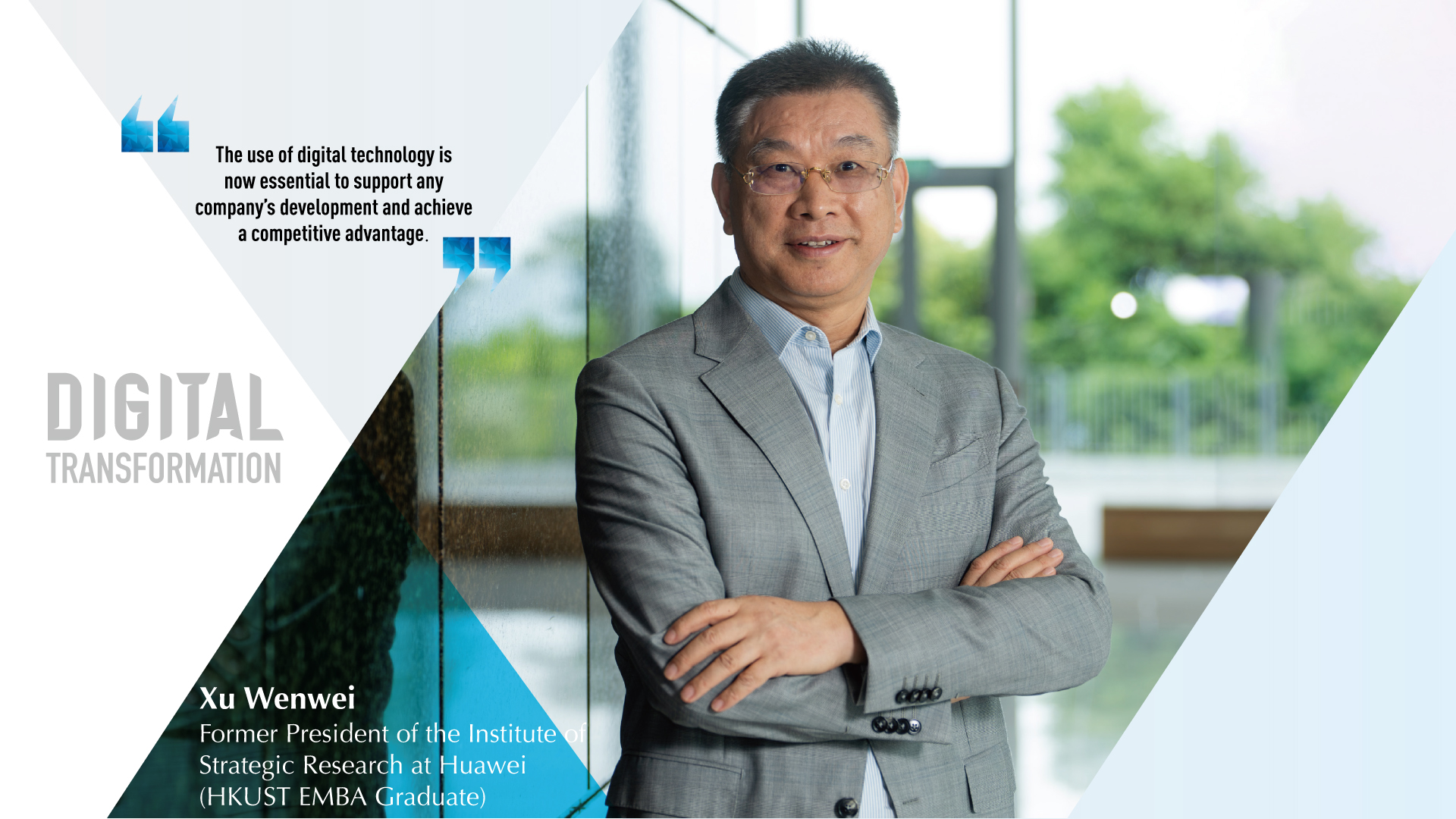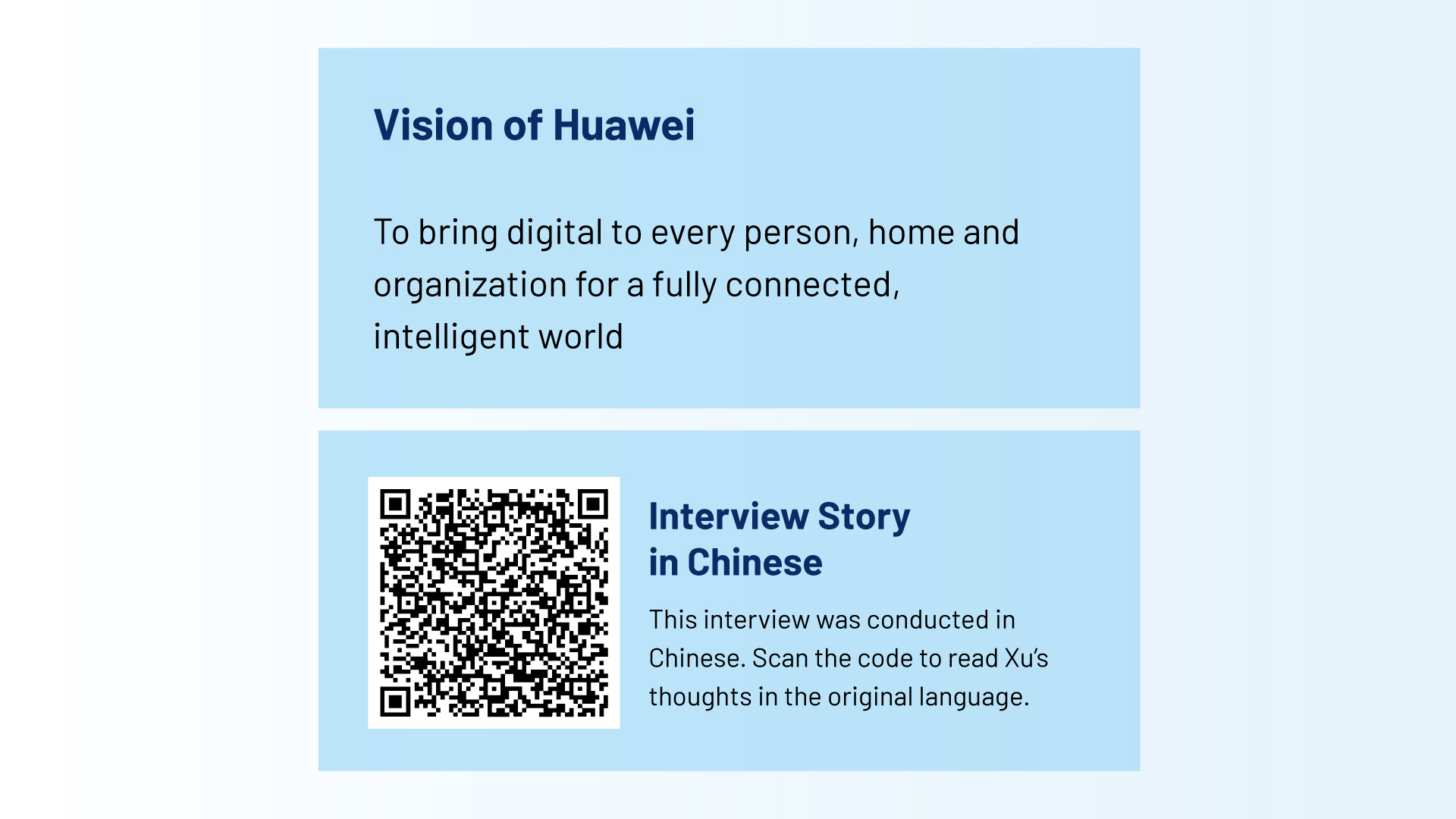
Huawei’s veteran strategic leader XU Wenwei says companies need to prepare for a digital future, but warns that the path to transformation is not an easy one.
In today’s fast-paced world, companies in every industry must embrace digital transformation in order to improve their competitiveness and be equipped to meet future challenges. It has become a key driving force not only for an industry, but also for a region and even an entire nation.
As the leading provider of information and communications (ICT) infrastructure and smart terminals, Chinese company Huawei has been leading the charge in this respect by helping other businesses adopt cutting- edge technologies and providing insights that lead to new efficiencies.
According to Xu Wenwei, former President of the Institute of Strategic Research at Huawei, digital transformation is a clear imperative. Therefore, they should explore and understand the critical nature of what is happening and take that fully into account as they plan their future trajectory.
“The use of digital technology is now essential to support any company’s development and achieve a competitive advantage,” Xu said.
To this end, the first step towards successful transformation is to achieve strategic alignment within the organization, emphasizing buy-in at all levels.
“All employees from senior management to grassroots levels must understand that digital transformation is essential for improving efficiency and meeting customer needs if you want to stay ahead in the market,” Xu said.
Once a strategy and understanding are in place, the organization may then face the daunting task of overhauling their IT architecture and data management system. That is no easy task, but must be done to ensure there is an up-to-date and integrated platform to support evolving business operations and future plans.
In doing this, Xu identified three major challenges that companies may encounter: streamlining the IT infrastructure, migrating data, and standardizing data management.
“This is a substantial undertaking and can take years,” he said. “So, organizations must be committed and lay a solid foundation to ensure success.”
In his view, the correct handling and storage of data should always be at the core of any such process.
“Data processing is the linchpin of digital transformation,” Xu said, noting that every company has legacy systems and procedures but must be ready to jettison this baggage. Doing so will often involve dismantling traditional, decentralized IT structures, which can perhaps be likened to old industrial chimneys, and migrating data to a unified, cloud-based architecture. This shift will not only make it easier to access information, but also foster better collaboration across the organization.
“Traditional IT architectures are all decentralized ‘chimneys’,” Xu said. “We need to break them up and move to cloud-based architecture, so that employees in different places have more information. Effective collaboration should not be limited by location or distance.”
Typically, another major challenge is to ensure that standards are uniform throughout when reorganizing the data. This can be a mammoth task which turns up unexpected difficulties, so meticulous planning and execution are required.
“This can take two or more years,” Xu said. “Therefore, companies must be committed to change.”
An approach he recommends is to look at ICT platforms as the production tool, data as the processing object, the software as the carrier, and good service as the ultimate goal. By resolving data processing problems, data can be turned into opportunities, then services, and finally income.
Measuring success and quick wins
Once the whole process of digital transformation begins, organizations must then ask themselves how best to gauge the effectiveness of their efforts.
For Xu, the standard measures are straightforward: more, faster, better and cheaper. That is the short way of saying that as they go digital, organizations should essentially be aiming to deliver more services, at a quicker pace, with improved quality, and better value for money.
At the outset, of course, there is nothing wrong with looking for a few “quick-wins.” With the prospect of a lengthy and possibly difficult transformation process ahead, some obvious early successes help to build momentum and enthusiasm among all those involved.
“Quick-win projects can enhance employee confidence and help to meet changing customer needs; this was our own experience at Huawei,” Xu said.
Usually, there are three useful criteria when selecting these projects. One is to focus on high-frequency tasks that clearly require digitization. The second is to target core business areas with significant volume. And the third is to tackle more complex and costly operations that, once improved, can showcase the benefits of digital transformation for all to see.
“It makes sense to select some projects that yield quick results, and affect a large volume of the core business,” Xu said. “The aim of digitization is to improve efficiencies. Once a breakthrough is achieved, the company management can show employees the benefits of transformation, which will win more support.”
Taking a long-term view
At the end of the day, he added, organizations must accept that digital transformation is a long-term commitment. Therefore, it generally pays to take a phased approach, starting with key processes and building a robust structure before adding functionalities and optimizing the details.
Looking ahead, Xu predicts that the ongoing transformation is sure to benefit the digital economy.
“This convergence will create a market space worth billions, offering opportunities across various sectors,” he said. “Within the ICT industry alone, demand for computing power, bandwidth, and storage will increase dramatically, and thus the pressing need for infrastructure must be addressed.”
Artificial Intelligence (AI) is also poised to play a pivotal role in all these developments, whether through the use of algorithms, computing power, or data.
“These are three key elements.” Xu said. “Computing power is like the human heart; it must be strong to drive processes. Algorithms are the brain, smart and well-developed. And data serves as the blood, flowing throughout the system.”
However, he warns that AI applications also present emerging challenges with issues such as trustworthiness and security very much to the fore.
“As technologies such as speech and facial recognition evolve, distinguishing between what is real and generated data will become critical,” he said, noting though that tech-savvy start-ups may be able to offer some innovative solutions.
A global consensus
Despite the hurdles, Xu remains optimistic about the potential for digital transformation, pointing out there is a global consensus about where things are heading and that 170 countries have already developed relevant strategies.
“In future, a country’s competitiveness may be closely related to its digital readiness, including its per capita bandwidth, computing power, storage capacity, and so on,” Xu said. This infrastructure will become an important measure of national competitiveness.”
For now, Huawei’s own advantage lies in providing comprehensive computing platforms and connectivity solutions, and also teaming up with others to offer tailored solutions to meet the unique needs of diverse customers and industries.
“Our vision is to bring the digital world to every person, home and organization, creating a smart world where everything is interconnected,” Xu said. “As a trailblazer in digital transformation, we will keep moving forward.”





